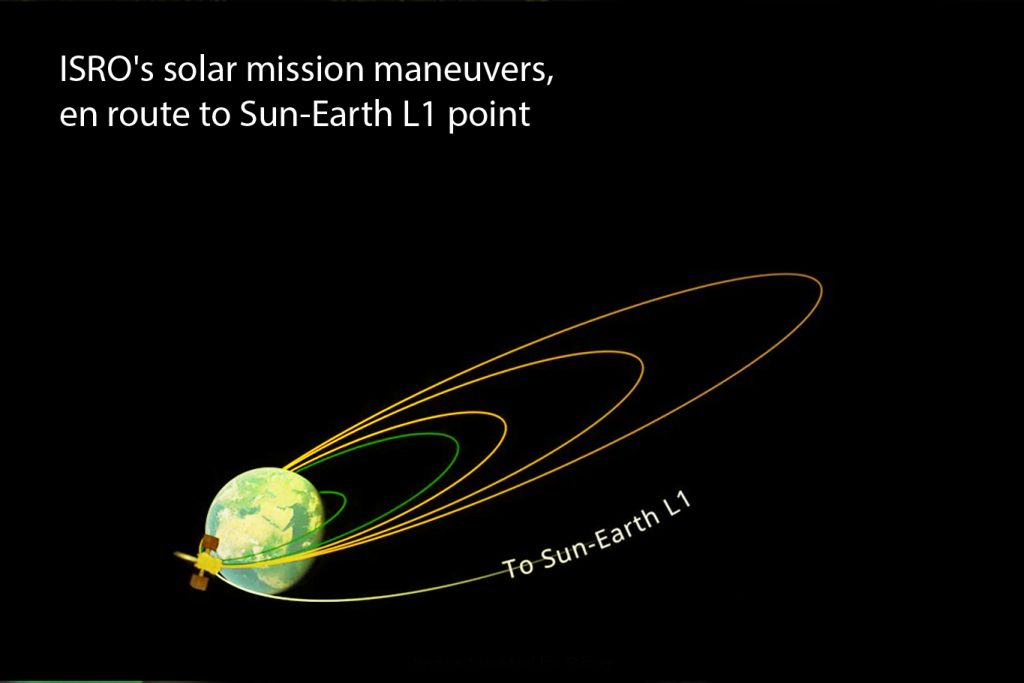
The Indian Space Research Organisation (ISRO) made an exciting announcement on Tuesday regarding its inaugural solar mission, known as Aditya-L1. It has successfully executed the Trans-Lagrangean Point 1 Insertion (TL1I) maneuver, altering the spacecraft’s trajectory towards the Sun-Earth L1 point.
This achievement marks the fifth consecutive instance in which ISRO has accomplished the transfer of an object along a trajectory aimed at another celestial body or a specific location in space. ISRO celebrated this milestone through a post on its official social media handle, stating, “Aditya-L1 Mission | Off to Sun-Earth L1 point | The Trans-Lagrangean Point 1 Insertion (TL1I) maneuver is performed successfully. The Aditya-L1 spacecraft has now been set on a precise course leading it to the Sun-Earth L1 point, and it will be maneuvered into orbit around L1 in approximately 110 days. This achievement marks the fifth consecutive instance in which ISRO has successfully steered an object toward another celestial body or a specific location in space.
The Aditya-L1 mission embarked on its journey with the launch of a rocket from the Satish Dhawan Space Station located in Sriharikota, Andhra Pradesh. The mission’s core objectives are twofold: to gather valuable scientific data and to make significant strides in India’s solar exploration pursuits.
ISRO shared earlier on the same platform, “Aditya-L1 Mission: Aditya-L1 has begun the collection of scientific data. The sensors of the STEPS instrument have initiated measurements of supra-thermal and energetic ions and electrons at distances surpassing 50,000 km from Earth. This data is instrumental for scientists in their analysis of particle behaviors around Earth. The figure illustrates fluctuations in the energetic particle environment, captured by one of the units.”
The Supra Thermal and Energetic Particle Spectrometer (STEPS) instrument, forming an integral part of the Aditya Solar Wind Particle Experiment (ASPEX) payload, has also commenced its data-gathering operations, marking a significant step in the mission’s scientific objectives.












